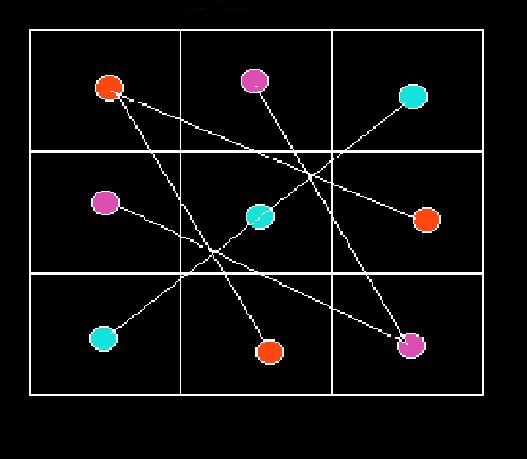

Recently a new method for the generation of squares of squares were produced in Part IA through Part IVE.
In addition, a new interleaved sequence of
This site will show that these four sequences as well as an infinitude of others are generated from the square sequence method developed in Part IA and ending with Part IVE .
The previous parts showed that a tuple (a1,b1,c1) can be converted into a different tuple (a,b,c) basically a transformation of the type (a1,b1,c1) ⇒ (a,b,c). In addition, the initial tuples start out with the tuples (1,b1,1) or (1,1,c1) in which the b1s and the c1s have the following values:
where k is any natural integer from 1 to ∞ used in calculating f and the denominator d = 2(2b1 − c1 − 1 ) in the equation:
This equation is critical is that it is the initial starting point for generating the interleaved sequences.
The tables listed below although produced according to the methods of Parts IA through IVE, were actually computed and outputted by a computer program. Three sequences are apparent as highlighted in color. The one in green, the one in teal and the one in white. For example each green tuple ends with a number which is repeated in the next green tuple. Likewise for the teal and white tuples.
|
|
|
|
|
To separate out the three sequences and generate the equations for each, the following method was found. All we need are two equations to generate
the interleaved sequences in this case we wil take a and b.
Since two sequences may be produced from table II above, a factor fs = 3 will be used to convert
Using these equations (or copying directly from Table II) we obtain for the first sequence whose Sloane number is listed in oeis as
A216852:
9, 9, -9, 9, 9, 45, 63, 117, 153, 225, 279, 369, 441, 549, 639, 765, 873, 1017, 1143, 1305, 1449, 1629, 1791, 1989, 2169, 2385, 2583, 2817, 3033, 3285, 3519, 3789, 4041,
4329, 4599, 4905, 5193, 5517, 5823, 6165, 6489, 6849, 7191, 7569, 7929, 8325, 8703, 9117
When each entry is divided by 9 the sequence is identical to the Sloane number A178218:
1, 1, -1, 1, 1, 5, 7, 13, 17, 25, 31, 41, 49, 61, 71, 85, 97, 113, 127, 145, 161, 181, 199, 221, 241, 265, 287, 313, 337, 365, 391, 421, 449, 481, 511, 545, 577, 613,
647, 685, 721, 761, 799, 841, 881, 925, 967, 1013
To obtain the equations for the second sequence we use the second line of table II (1,7,-5) and solve for f.
Substituting the value of 3n for n in the equations for a and b as was done above, affords the equations for the second sequence:
Using these equations (or copying directly from Table II) we obtain for the second sequence identical to
the Sloane No. A214493 except for the first three numbers which are also part of the sequence:
-1, 5, -7, 17, 23, 65, 89, 149, 191, 269, 329, 425, 503, 617, 713, 845, 959, 1109, 1241, 1409, 1559, 1745, 1913
To obtain the equations for the third sequence we use the third line of table II (1,13,7) and solve for f.
Substituting the value of 3n for n in the equations for a and b as was done above, affords the equations for the second sequence:
Using these equations (or copying directly from Table II) we obtain for the third sequence whose Sloane number is listed in oeis as
A216853:
-7, 5, -1, 29, 41, 89, 119, 185, 233, 317, 383, 485, 569, 689, 791, 929, 1049, 1205, 1343, 1517, 1673, 1865, 2039, 2249, 2441, 2669, 2879, 3125, 3353, 3617, 3863,
4145, 4409, 4709, 4991, 5309, 5609, 5945, 6263, 6617, 6953, 7325, 7679, 8069, 8441, 8849, 9239, 9665, 10073, 10517, 10943, 11405, 11849
So in effect what we have done is to produce three new sequences via a completely new route (the Sloane number A214493 is already known). Previous methods would have generated one sequence without the knowledge that others existed. In addition, both sequences are related via the general sequence formula (before factoring in fs) and thus constitute a family of interleaved sequences.
This concludes Part B. Go back to homepage.
Copyright © 2012 by Eddie N Gutierrez. E-Mail: Fiboguti89@Yahoo.com